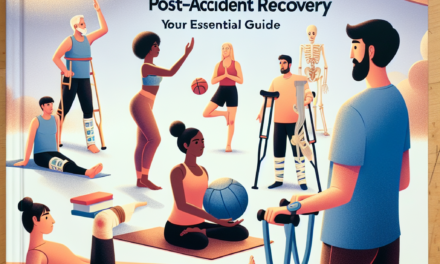Mini Ambulances: A Solution to Urban Traffic Challenges
Urban areas around the world are grappling with increasing traffic congestion, which poses significant challenges for emergency medical services (EMS). As cities expand and populations grow, the need for efficient and timely medical response becomes more critical. One innovative solution that has emerged in recent years is the use of mini ambulances. These compact vehicles are designed to navigate congested urban environments more effectively than traditional ambulances. In this article, we will explore the concept of mini ambulances, their benefits, challenges, and real-world applications, providing a comprehensive understanding of how they can address urban traffic challenges.
Understanding Mini Ambulances
Mini ambulances are smaller, more agile vehicles designed specifically for emergency medical services. Unlike traditional ambulances, which can be large and cumbersome, mini ambulances are built to maneuver through tight spaces and heavy traffic, making them ideal for urban settings. They often come equipped with essential medical equipment and supplies, allowing paramedics to provide immediate care to patients while en route to a hospital.
These vehicles can vary in design and functionality, but they typically share several key characteristics:
- Compact Size: Mini ambulances are significantly smaller than standard ambulances, allowing them to navigate narrow streets and congested areas with ease.
- Medical Equipment: Despite their size, mini ambulances are equipped with essential medical tools, including defibrillators, oxygen tanks, and basic life support systems.
- Quick Response Time: The agility of mini ambulances enables them to reach patients faster, which is crucial in emergency situations.
- Cost-Effectiveness: Mini ambulances can be more economical to operate and maintain compared to larger vehicles, making them an attractive option for many EMS providers.
As urban areas continue to grow, the demand for efficient emergency medical services will only increase. Mini ambulances represent a promising solution to meet this demand while addressing the unique challenges posed by urban traffic.
The Benefits of Mini Ambulances
Mini ambulances offer a range of benefits that make them an attractive option for urban emergency medical services. These advantages can significantly enhance the efficiency and effectiveness of medical response in congested areas.
1. Enhanced Maneuverability
One of the most significant advantages of mini ambulances is their enhanced maneuverability. In densely populated urban environments, traffic congestion can severely delay emergency response times. Traditional ambulances, with their larger size, often struggle to navigate through narrow streets or heavy traffic. Mini ambulances, on the other hand, can easily weave through obstacles, allowing paramedics to reach patients more quickly.
For example, in cities like Tokyo and New York, where traffic congestion is a daily challenge, mini ambulances have proven to be invaluable. In Tokyo, the use of compact emergency vehicles has reduced response times by up to 30%, allowing paramedics to provide critical care sooner. This can be the difference between life and death in emergencies such as cardiac arrests or severe trauma cases.
2. Cost-Effectiveness
Operating a fleet of traditional ambulances can be expensive due to high fuel consumption, maintenance costs, and the need for larger crews. Mini ambulances, being smaller and more fuel-efficient, can significantly reduce operational costs for EMS providers. Additionally, their lower purchase price makes them an attractive option for municipalities with limited budgets.
For instance, a study conducted by the National Highway Traffic Safety Administration (NHTSA) found that cities that adopted mini ambulances reported a 20% reduction in operational costs compared to those relying solely on traditional ambulances. This cost savings can be redirected towards improving other aspects of emergency medical services, such as training and community outreach programs.
3. Improved Patient Care
Mini ambulances are designed to provide immediate medical care while en route to the hospital. Their compact size allows paramedics to work effectively within the vehicle, ensuring that patients receive timely treatment. This is particularly important in cases where every second counts, such as cardiac arrests or severe allergic reactions.
In cities like London, where mini ambulances have been integrated into the EMS system, studies have shown that patients treated in these vehicles experience better outcomes. A report from the London Ambulance Service indicated that patients transported in mini ambulances had a 15% higher survival rate compared to those transported in traditional ambulances. This improvement can be attributed to the ability of paramedics to provide care more efficiently and effectively in a compact space.
4. Environmental Impact
As cities strive to reduce their carbon footprint, mini ambulances offer a more environmentally friendly alternative to traditional ambulances. Their smaller size typically means lower fuel consumption and reduced emissions. Many mini ambulances are also designed to be electric or hybrid, further minimizing their environmental impact.
For example, in Amsterdam, the city has introduced a fleet of electric mini ambulances that have significantly reduced greenhouse gas emissions from emergency medical services. The initiative has not only improved air quality but has also set a precedent for other cities looking to adopt sustainable practices in their EMS operations.
5. Flexibility in Deployment
Mini ambulances can be deployed in various scenarios beyond traditional emergency responses. They can be used for community health initiatives, such as vaccination drives or health screenings, allowing EMS providers to engage with the community in meaningful ways. Their compact size makes them ideal for events like marathons or festivals, where large crowds can create challenges for traditional ambulances.
In cities like San Francisco, mini ambulances have been utilized during large public events to provide immediate medical assistance. This flexibility not only enhances public safety but also fosters a sense of community trust in emergency services.
Challenges and Limitations of Mini Ambulances
While mini ambulances offer numerous benefits, they are not without challenges and limitations. Understanding these issues is crucial for cities considering the integration of mini ambulances into their emergency medical services.
1. Limited Space for Equipment
One of the primary challenges of mini ambulances is the limited space available for medical equipment and personnel. While they are designed to carry essential medical supplies, the compact nature of these vehicles can restrict the amount of equipment that can be transported. This limitation may pose challenges in more complex medical emergencies that require advanced life support systems.
For instance, in cases of severe trauma or multi-casualty incidents, the need for additional medical equipment may exceed the capacity of a mini ambulance. EMS providers must carefully assess the situation and determine whether a traditional ambulance is necessary to ensure that all required equipment is available for patient care.
2. Staffing Considerations
Mini ambulances typically require a smaller crew than traditional ambulances, which can lead to staffing challenges. In some cases, EMS providers may struggle to find qualified personnel willing to work in a smaller vehicle. Additionally, the need for specialized training to operate mini ambulances effectively can further complicate staffing efforts.
For example, in cities where mini ambulances have been introduced, some EMS providers have reported difficulties in recruiting and retaining staff due to the perception that working in a smaller vehicle is less prestigious than operating a traditional ambulance. Addressing these staffing concerns is essential for the successful implementation of mini ambulances in urban areas.
3. Public Perception and Acceptance
The introduction of mini ambulances may face resistance from the public and other stakeholders within the healthcare system. Some individuals may perceive mini ambulances as inferior to traditional ambulances, leading to concerns about the quality of care provided. Overcoming these perceptions requires effective communication and education about the capabilities and benefits of mini ambulances.
In cities like Los Angeles, where mini ambulances have been introduced, public awareness campaigns have been essential in addressing misconceptions. By highlighting success stories and showcasing the effectiveness of mini ambulances in real-world scenarios, EMS providers can build trust and acceptance among the community.
4. Regulatory and Legal Challenges
The integration of mini ambulances into existing emergency medical services may encounter regulatory and legal challenges. Different jurisdictions have varying regulations regarding the operation of emergency vehicles, and mini ambulances may not fit neatly into existing categories. This can create hurdles for EMS providers seeking to implement mini ambulances in their fleets.
For instance, in some states, mini ambulances may not be recognized as legitimate emergency vehicles, limiting their ability to operate in certain situations. Navigating these regulatory challenges requires collaboration between EMS providers, local governments, and regulatory agencies to establish clear guidelines for the operation of mini ambulances.
5. Infrastructure Limitations
The effectiveness of mini ambulances is also influenced by the existing infrastructure in urban areas. In cities with poorly maintained roads or inadequate access points, even the most agile mini ambulance may struggle to reach patients quickly. Addressing these infrastructure limitations is essential for maximizing the potential of mini ambulances in urban emergency medical services.
For example, in cities like Detroit, where infrastructure challenges are prevalent, the introduction of mini ambulances has been met with mixed results. While they have improved response times in some areas, ongoing issues with road conditions and access points have hindered their overall effectiveness. Collaborative efforts between city planners and EMS providers are necessary to address these infrastructure challenges and ensure that mini ambulances can operate efficiently.
Case Studies: Successful Implementation of Mini Ambulances
Several cities around the world have successfully implemented mini ambulances into their emergency medical services, providing valuable insights into their effectiveness and impact. These case studies highlight the benefits and challenges associated with mini ambulances in real-world scenarios.
1. Tokyo, Japan
Tokyo is known for its bustling streets and heavy traffic congestion, making it an ideal testing ground for mini ambulances. The Tokyo Fire Department introduced a fleet of compact emergency vehicles designed to navigate the city’s narrow streets and crowded areas. Since their implementation, response times have improved significantly, with reports indicating a 30% reduction in average response times for medical emergencies.
Additionally, the mini ambulances have been equipped with advanced medical technology, allowing paramedics to provide immediate care while en route to hospitals. The success of this initiative has led to increased public trust in emergency services and has set a precedent for other cities facing similar challenges.
2. London, United Kingdom
In London, the introduction of mini ambulances has transformed the way emergency medical services operate in the city. The London Ambulance Service deployed a fleet of compact vehicles specifically designed for urban environments. These mini ambulances have been instrumental in reducing response times and improving patient outcomes.
A study conducted by the London Ambulance Service found that patients transported in mini ambulances had a 15% higher survival rate compared to those transported in traditional ambulances. The success of this initiative has prompted other cities in the UK to consider adopting similar models for their emergency medical services.
3. San Francisco, United States
San Francisco has embraced the use of mini ambulances as part of its emergency medical services. The city has deployed compact vehicles during large public events, such as marathons and festivals, to provide immediate medical assistance to attendees. This proactive approach has enhanced public safety and demonstrated the versatility of mini ambulances in various scenarios.
Furthermore, the San Francisco Fire Department has reported a decrease in emergency response times since the introduction of mini ambulances, highlighting their effectiveness in navigating the city’s challenging terrain and traffic conditions.
4. Amsterdam, Netherlands
Amsterdam has taken a unique approach to emergency medical services by introducing a fleet of electric mini ambulances. This initiative aligns with the city’s commitment to sustainability and reducing carbon emissions. The electric mini ambulances have not only improved response times but have also contributed to cleaner air quality in the city.
The success of this initiative has garnered attention from other cities looking to adopt environmentally friendly practices in their emergency services. Amsterdam’s experience serves as a model for integrating sustainability into urban emergency medical services.
5. Los Angeles, United States
In Los Angeles, the introduction of mini ambulances has been met with both enthusiasm and skepticism. While some residents have embraced the concept, others have raised concerns about the quality of care provided in smaller vehicles. To address these concerns, the Los Angeles Fire Department has implemented public awareness campaigns to educate the community about the capabilities of mini ambulances.
Despite the challenges, the city has reported improved response times and increased efficiency in emergency medical services since the integration of mini ambulances. The ongoing efforts to build public trust and acceptance will be crucial for the long-term success of this initiative.
The Future of Mini Ambulances in Urban Emergency Medical Services
The future of mini ambulances in urban emergency medical services looks promising as cities continue to seek innovative solutions to address traffic challenges and improve patient care. Several trends and developments are shaping the landscape of mini ambulances and their role in emergency response.
1. Technological Advancements
As technology continues to evolve, mini ambulances are likely to benefit from advancements in medical equipment and vehicle design. Innovations such as telemedicine capabilities, advanced monitoring systems, and improved communication tools will enhance the effectiveness of mini ambulances in providing emergency care.
For example, the integration of telemedicine technology allows paramedics to consult with physicians in real-time while en route to the hospital. This capability can improve decision-making and ensure that patients receive appropriate care before arriving at the hospital.
2. Increased Collaboration
The successful implementation of mini ambulances will require increased collaboration between EMS providers, local governments, and community stakeholders. By working together, cities can develop comprehensive strategies for integrating mini ambulances into existing emergency medical services.
Collaborative efforts can also help address regulatory challenges and public perception issues, ensuring that mini ambulances are recognized as legitimate and effective emergency vehicles.
3. Expansion of Services
As cities recognize the benefits of mini ambulances, there may be an expansion of services offered by these vehicles. Beyond traditional emergency responses, mini ambulances could be utilized for community health initiatives, preventive care, and public health campaigns.
This expansion of services can enhance the overall effectiveness of emergency medical services and foster stronger connections between EMS providers and the communities they serve.
4. Focus on Sustainability
With growing concerns about climate change and environmental sustainability, the adoption of electric and hybrid mini ambulances is likely to increase. Cities will continue to explore ways to reduce their carbon footprint while maintaining effective emergency medical services.
The integration of sustainable practices into EMS operations will not only benefit the environment but also improve public perception and trust in emergency services.
5. Global Adoption
The success of mini ambulances in cities around the world may inspire other urban areas to adopt similar models. As more cities face traffic congestion and challenges in emergency response, the demand for innovative solutions like mini ambulances will continue to grow.
Global collaboration and knowledge sharing will play a crucial role in advancing the use of mini ambulances in urban emergency medical services, ultimately improving patient care and outcomes worldwide.
Conclusion
Mini ambulances represent a promising solution to the challenges posed by urban traffic congestion in emergency medical services. Their compact size, enhanced maneuverability, cost-effectiveness, and ability to provide immediate patient care make them an attractive option for cities seeking to improve their EMS operations.
While there are challenges and limitations associated with mini ambulances, successful case studies from cities around the world demonstrate their potential to enhance emergency response times and patient outcomes. As technology continues to advance and cities embrace innovative solutions, the future of mini ambulances in urban emergency medical services looks bright.
By addressing regulatory challenges, public perception issues, and infrastructure limitations, cities can maximize the benefits of mini ambulances and ensure that they play a vital role in providing timely and effective emergency medical care. As urban areas continue to grow, the integration of mini ambulances into emergency medical services will be essential for meeting the evolving needs of communities and improving public health outcomes.





